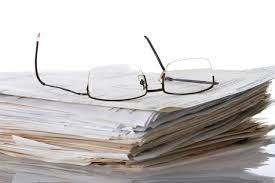
One of the most critical steps in protecting yourself from financial exploitation is securing your financial documents. Whether it’s checks, bank statements, or credit card information, ensuring that these documents are safely stored can prevent unauthorized access and misuse. This article provides practical advice on how to secure your financial documents effectively.
Why Financial Privacy Is Crucial
Your financial documents contain sensitive information that can be used to access your accounts, steal your identity, or even commit fraud. Keeping these documents secure is essential to protect your assets and maintain your financial privacy.
Best Practices for Securing Documents
To safeguard your financial information, consider the following best practices:
- Use a Locked File Cabinet: Store important financial documents, such as bank statements, checks, and credit card information, in a locked file cabinet. This ensures that only you or a trusted individual have access.
- Organize Your Documents: Keep your financial documents well-organized. Group similar documents together (e.g., bank statements, tax records) and regularly review them to ensure everything is in order.
- Shred Unnecessary Documents: Dispose of old or unnecessary financial documents by shredding them. Simply throwing them away can leave you vulnerable to identity theft.
- Limit Access to Your Documents: Only allow trusted individuals to access your financial documents. Even if someone is helping you with day-to-day activities, they should not have unrestricted access to your financial information.
What Documents Should You Secure?
Some financial documents are more sensitive than others and require extra protection. Here’s a checklist of documents you should secure:
- Bank Statements: Monthly or quarterly statements from your bank or credit union.
- Checks: Both unused checks and those that have been processed.
- Credit Card Statements: Statements showing your spending and payment history.
- Investment Records: Documents related to stocks, bonds, retirement accounts, etc.
- Legal Documents: Wills, power of attorney, trust documents, etc.
- Tax Records: Returns, W-2s, 1099s, and other tax-related forms.
- Loan Documents: Mortgage agreements, car loan papers, and other loan documents.
Protecting Digital Documents
In today’s digital age, many financial documents are stored electronically. Here’s how to protect your digital financial information:
- Use Strong Passwords: Ensure that all financial accounts and documents stored online are protected by strong, unique passwords.
- Enable Two-Factor Authentication: Whenever possible, enable two-factor authentication (2FA) on accounts that hold financial information. This adds an extra layer of security.
- Regularly Update Security Software: Keep your computer and mobile devices protected by regularly updating security software, including antivirus programs.
- Backup Important Files: Regularly back up important digital financial documents to a secure location, such as an external hard drive or a cloud-based service with strong encryption.
Conclusion
Securing your financial documents is a vital step in protecting yourself from financial exploitation. By following these best practices, you can ensure that your sensitive information remains private and safe from unauthorized access. Remember, it’s better to be proactive and secure your documents now than to deal with the consequences of a security breach later.



